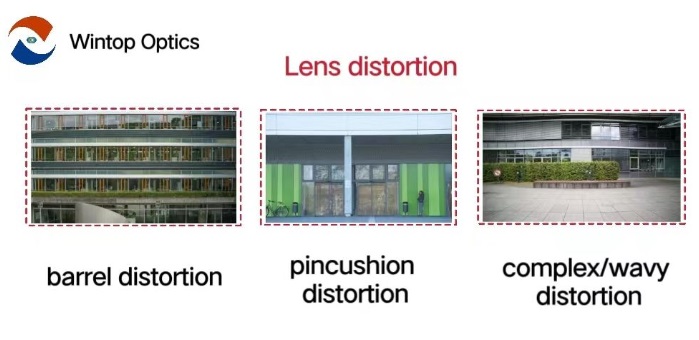What Are You Looking For?
What Are You Looking For?
Tel : 86 153-0268-9906
Email : yorty@yuntal.com
What are the factors that affect imaging quality?
Mar 20, 2024Why do images presented by a lens have optical aberrations?
A. Distortion
Distortion will cause real objects to be straight lines, but in photos to be non-straight lines, to be curved lines.
a) barrel
b) pincushion
c) complex/wavy
Types of lenses prone to distortion: usually zoom lenses and wide-angle lenses.
B. Field curvature
For plane objects in reality, after imaging, the real image surface is curved, and most actual sensors are also flat, which will cause the center field of view and the edge field of view to be unable to present clear images at the same time.
Lens types prone to field curvature: usually wide-angle lenses and large aperture lenses.
C. Vignetting
a) Vignetting-----Light Falloff
Uneven brightness Light Falloff, the exposure of the center field of view and the edge field of view are different, resulting in inconsistent brightness between the center and edge of the picture, which is what we often call the camera vignetting problem.
b) Vignetting-----Color Cast
Usually there is a color difference between the edges of the picture (especially the corners) and the center area. It is not entirely caused by lens aberration, filters and sensors will also have a certain impact.
Types of lenses prone to vignetting: usually large
There are many factors that cause optical aberration in lenses, some of which have been shared above:
1) distortion
2) field curvature
3) Vignetting ---Light Falloff
4) Vignetting ---Color Cast
In fact, there are some other influencing factors:
1) Focus Shift
When you reduce the aperture size, the best focus plane will move to the front or back. That is, the aperture size will affect the best focus plane position, which is what we call focus shift.
Common lenses that are prone to focus shift: large aperture lenses. When adjusting the aperture, the focus usually needs to be re-adjusted.
2) Onion ring bokeh
There are some out-of-focus circular rays of light in the optical path of the lens, which is generally caused by a defective lens.
Common lenses that are prone to "onionrings": Some large aperture lenses often use aspherical lenses because of the flatness of the surface involved during processing.
3) Flare-Ghosting
When there are some abnormal colored patches in the presented image, usually like colored circles or colored blocks of specific shapes, we become ghost images.
Common ghost images: zoom lenses, lenses with a large number of lenses, and large-diameter lenses. During processing, try to reduce the aperture as much as possible, or use post-image processing.
4) Flare-Internal Reflections
Generally speaking, highly reflective objects inside the lens, such as structural parts with too high reflectivity, or dirty lenses in the optical path, etc. In most cases it is caused by workmanship issues.
Common internal reflection stray light lenses:especially large aperture lenses, during the production process, you can try to eliminate light, cut off light, block stray light, increase transmittance, and reduce the aperture as much as possible when conditions permit.
